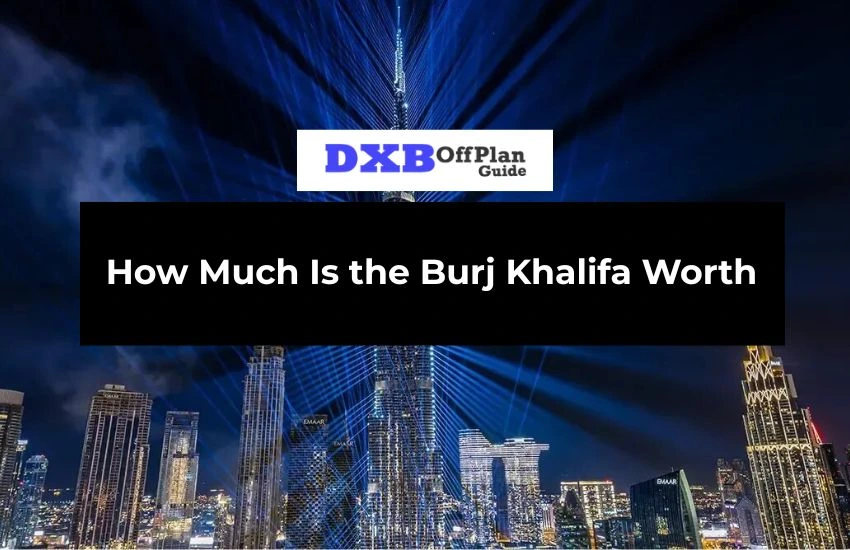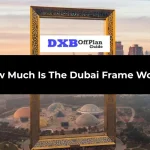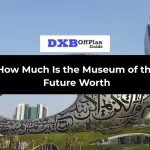The Burj Khalifa stands as more than just the world’s tallest building—it represents a $20 billion question mark in global real estate valuation. While most sources repeat the $1.5 billion construction cost, this figure dramatically underestimates the tower’s true economic impact and replacement value. The actual worth encompasses construction expenses, brand valuation, annual revenue generation, and its role as the centerpiece of Downtown Dubai’s $20 billion master development. This definitive analysis breaks down the Burj Khalifa’s value across multiple dimensions, providing a realistic assessment of what the world’s most iconic skyscraper is truly worth in today’s market.

Construction Cost vs Current Valuation The Numbers Behind the Tower
The Burj Khalifa’s construction cost represents only the starting point for understanding its true value in the current market.
-
Original Construction Budget: $1.5 billion (completed 2010)
-
Infrastructure and Land Development: Additional $700 million
-
2025 Replacement Cost: Estimated $2.8-3.5 billion, accounting for inflation and materials
-
Engineering Premium: Unique structural designs add 25-30% to standard construction costs
The replacement cost alone positions the Burj Khalifa’s property valuation significantly higher than commonly reported figures. Construction inflation and specialized engineering requirements mean rebuilding the tower today would require nearly double the original budget.
Revenue Generation The Commercial Engine
The Burj Khalifa functions as a diversified revenue generator through multiple income streams that contribute substantially to its overall worth.
Residential and Commercial Real Estate
The tower’s luxury residential apartments and corporate offices represent one of its most valuable assets. With Armani Hotel Dubai occupying the first 39 floors and premium office space commanding top-tier rates, the building generates substantial rental income.
-
Office Space Premium: 30-40% higher rates than comparable Dubai properties
-
Residential Rental Yield: 5-7% despite premium pricing
-
Corporate Tenancy: Blue-chip companies pay premium rates for address prestige
Tourism and Observation Deck Revenue
The At the Top Burj Khalifa observation deck represents one of the world’s most profitable tourist attractions, with advanced ticket pricing and exclusive experiences.
-
Annual Visitor Numbers: 1.7+ million visitors pre-pandemic
-
Ticket Revenue: $95-400 per person, depending on experience level
-
Premium Experiences: SKY level tickets and sunset slots command 60% premiums
Brand Value and Economic Impact The Intangible Worth
The Burj Khalifa’s value extends far beyond physical assets and direct revenue, creating substantial economic impact through brand association and tourism draw.
Emaar Brand Enhancement
As the flagship development of Emaar Properties, the tower has substantially increased the developer’s global profile and market capitalization.
-
Brand Visibility: Estimated $4-6 billion in equivalent marketing value
-
Developer Reputation: Established Emaar as a global luxury developer
-
Project Premiums: Emaar commands 15-25% price premiums for proximity to Burj Khalifa
Dubai Tourism and Economic Impact
The tower serves as the centerpiece of Dubai’s tourism strategy, driving visitor numbers and supporting broader economic activity.
-
Tourism Draw: 25% of Dubai visitors cite Burj Khalifa as the primary attraction
-
Economic Multiplier: Every observation deck ticket generates additional spending in Downtown Dubai
-
Global Positioning: Established Dubai as a modern architectural destination
Comparative Global Valuation Context
Placing the Burj Khalifa’s worth in context with other global landmarks reveals its unique value proposition and economic performance.
-
One World Trade Center: $3.9 billion construction, limited revenue diversification
-
The Shard London: $2.4 billion cost, lower observation deck revenue
-
Shanghai Tower: $2.4 billion construction, similar mixed-use model
-
Value Differentiation: Burj Khalifa’s brand impact exceeds all comparable structures
The Burj Khalifa’s combination of height records, revenue diversification, and brand impact creates a valuation profile unmatched by any other modern skyscraper.
Factors Influencing Current Valuation Market Dynamics
Several key factors determine the Burj Khalifa’s current market valuation and future worth projections in the evolving Dubai real estate landscape.
-
Prime Location Status: The Centerpiece of Downtown Dubai maintains a premium valuation
-
Maintenance Costs: Annual operating budget estimated at $50-70 million
-
Market Conditions: Dubai luxury real estate trends directly impact valuation
-
Technological Evolution: Ongoing upgrades and maintenance preserve value
-
Competitive Landscape: New developments like Dubai Creek Tower create both competition and cluster value
Investment Perspective Long-Term Value Assessment
From an investment standpoint, the Burj Khalifa represents a unique asset class with specific value drivers and risk factors that influence its worth.
-
Appreciation History: Consistent value growth despite market fluctuations
-
Revenue Stability: Diversified income streams provide recession resistance
-
Depreciation Factors: Technological obsolescence and design aging
-
Market Position: Unlikely to be surpassed as the height record holder for the foreseeable future
-
Cultural Significance: Transcends real estate to become a global icon
Frequently Asked Questions
Q1: What was the original construction cost of Burj Khalifa?
The Burj Khalifa’s construction cost was approximately $1.5 billion upon completion in 2010. This figure excludes substantial infrastructure investments and land development costs in the surrounding Downtown Dubai area.
Q2: How much revenue does Burj Khalifa generate annually?
While Emaar doesn’t disclose exact figures, industry analysis estimates the Burj Khalifa generates $250-400 million annually through observation deck tickets, residential and commercial rentals, hotel operations, and premium experiences.
Q3: What would it cost to build Burj Khalifa today?
Current construction inflation and material costs suggest rebuilding the Burj Khalifa today would require $2.8-3.5 billion, accounting for specialized engineering, premium materials, and updated building technologies.
Q4: How does Burj Khalifa’s value compare to other skyscrapers?
The Burj Khalifa’s combination of height records, revenue diversification, and brand impact creates a valuation profile exceeding comparable global skyscrapers, with an estimated total worth 3-4 times higher than construction cost alone.
Q5: What percentage of Burj Khalifa is residential space?
Approximately 40% of the Burj Khalifa comprises residential apartments, with the remainder containing offices, the Armani Hotel, mechanical systems, and public spaces including the observation decks.
Q6: How has Burj Khalifa impacted Emaar Properties’ value?
The Burj Khalifa has substantially enhanced Emaar’s global reputation, enabling premium pricing across their portfolio and establishing the developer as a leader in luxury real estate, contributing significantly to their market capitalization.





Leave a Reply